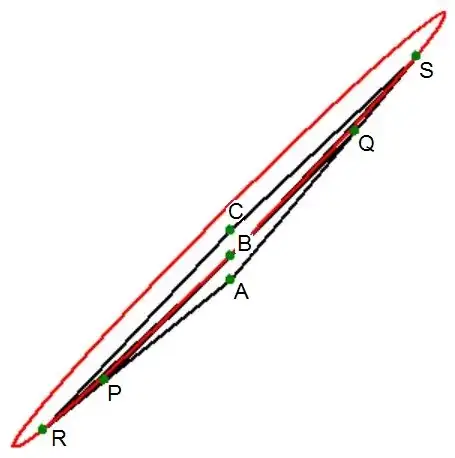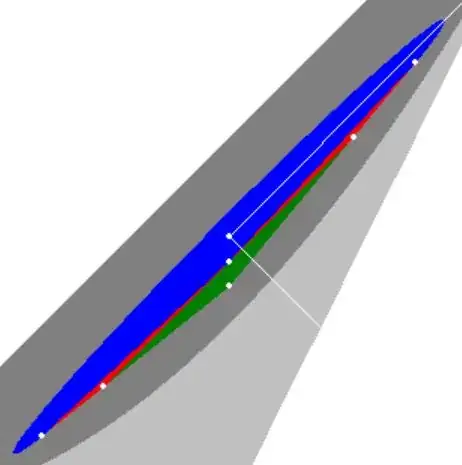An ellipse is given by the following equation: $$ 152 x^2 - 300 x y + 150 y^2 - 42 x + 40 y + 3 = 0 $$ After solving for the midpoint we have: $$ 152 (x-1/2)^2 - 300 (x-1/2) (y-11/30) + 150 (y-11/30)^2 = 1/6 $$ Introducing polar coordinates: $$ x = 1/2 + r \cos(\theta) \quad ; \quad y = 11/30 + r \sin(\theta) $$ Giving: $$ 152\, r^2 \cos^2(\theta) - 300\, r^2\, \cos(\theta) \sin(\theta) + 150\, r^2 \sin^2(\theta) = 1/6 \quad \Longrightarrow \\ \frac{1}{2} r^2(\theta) = \frac{1/12} {152 \cos^2(\theta) - 300 \cos(\theta) \sin(\theta) + 150 \sin^2(\theta)} $$ The area of a sector of the ellipse is: $$ \int_{\theta_1}^{\theta_2} \frac{1}{2} r^2(\theta) \, d\theta $$ So it seems that we have to find the indefinite integral: $$ \int \frac{1/12 \, d\theta} {152 \cos^2(\theta) - 300 \cos(\theta) \sin(\theta) + 150 \sin^2(\theta)} $$ And then I'm stuck. Because feeding this into MAPLE with
int(1/12/(152*cos(theta)^2-300*cos(theta)*sin(theta)+150*sin(theta)^2),theta);quite to my surprise, gives a complex result: $$ {\frac {1}{720}}\,i\sqrt {3}\ln \left( \left( \tan \left( 1/2\,\theta \right) \right) ^{2}+ \left( {\frac {5}{38}}\,i\sqrt {3}+{\frac {75} {38}} \right) \tan \left( 1/2\,\theta \right) -1 \right) \\ -{\frac {1}{720 }}\,i\sqrt {3}\ln \left( \left( \tan \left( 1/2\,\theta \right) \right) ^{2}+ \left( -{\frac {5}{38}}\,i\sqrt {3}+{\frac {75}{38}} \right) \tan \left( 1/2\,\theta \right) -1 \right) $$ But I'm pretty sure that the area of an ellipse sector is a real number. So the question is: does there exist a closed form for the abovementioned integral that is real valued instead of complex? What is it? And why that complex result with MAPLE?
AfterMath (see accepted answer)

$$
A = (1/2,3/10) \quad ; \quad B = (1/2,1/3) \quad ; \quad C = (1/2,11/30) \\
P = (1/3,1/6) \quad ; \quad Q = (2/3,1/2) \\
R = (1/4,1/10) \quad ; \quad S = (3/4,3/5)
$$
Triangle edges are black; ellipse is $\color{red}{red}$ .
Triangle areas:
$\Delta PAQ = 1/180$ , $\Delta PRB = \Delta QSB = 1/720$ .
It is conjectured that the ellipse sector area $\overline{CRBSC}$
is exactly $1/3$ of the total ellipse area;
the latter being
$ = \pi\sqrt{3}/180$ . Can someone prove or disprove this conjecture?
